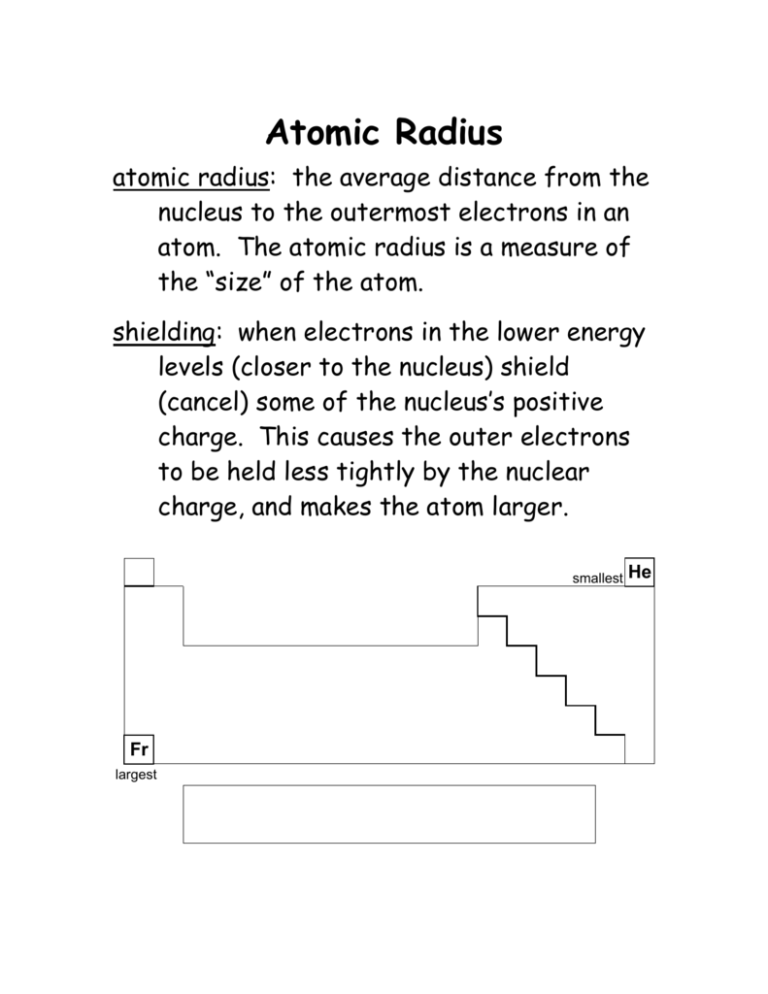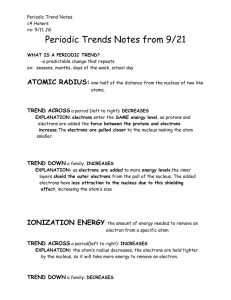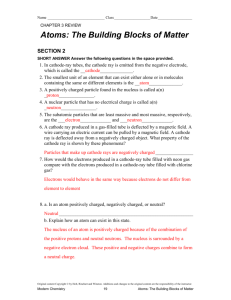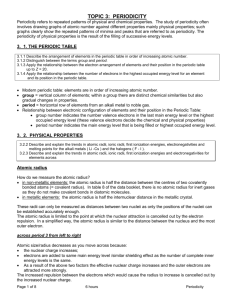Atomic & Ionic Radius
advertisement

Atomic Radius atomic radius: the average distance from the nucleus to the outermost electrons in an atom. The atomic radius is a measure of the “size” of the atom. shielding: when electrons in the lower energy levels (closer to the nucleus) shield (cancel) some of the nucleus’s positive charge. This causes the outer electrons to be held less tightly by the nuclear charge, and makes the atom larger. smallest Fr largest He Atoms of elements get larger as you move down a column, because each row adds a new energy level, and each new level is farther out from the nucleus than the previous level. Also, the inner electrons shield some of the charge in the nucleus, which means that the nucleus holds onto the outer electrons less tightly. Atoms of elements get smaller as you move to the right within the same row. This is because the amount of unshielded positive charge from the nucleus is greater, which pulls the electrons closer. Ionic Radius Because most of the space an atom takes up is outside the nucleus (where the electrons are), changing the number of electrons (making an ion) changes the size of the atom. If you take away electrons, the ion gets smaller. This means ions with a positive charge are smaller than the neutral atom and also smaller than an atom of the neutral element with the same number of electrons. This is because the positive ions have more unshielded positive charge, which pulls the electrons closer. If you add electrons, the ion gets larger. This means ions with a negative charge are larger than the neutral atom and also larger than an atom of the neutral element with the same numbre of electrons.











